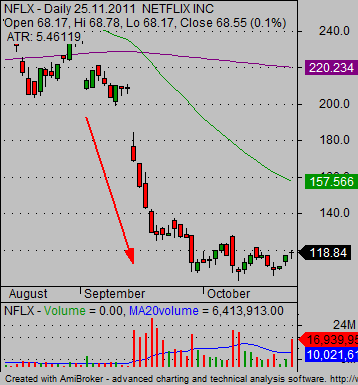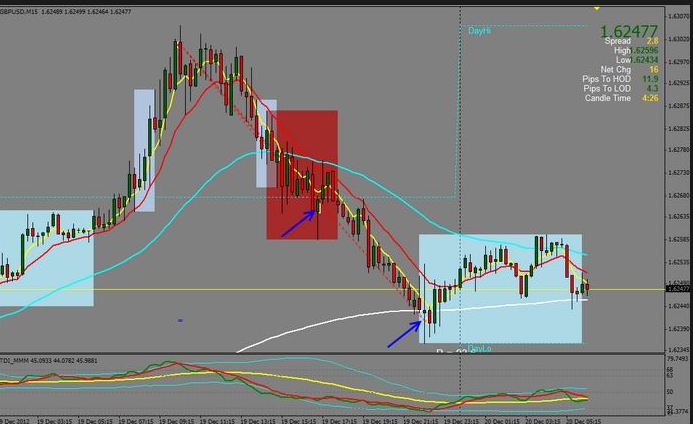

It should not be unduly affected by extreme observations. Average should be such that it should not be affected by the presence of one or two very small or very large observations. It should be capable of further algebraic treatment. Average should be capable of further mathematical and statistical computations to expand or enhance its utility. This equality doesn’t hold for different probability distributions, as illustrated for the lognormal distribution here.
The formula can be extended to more number of groups. It should not be affected too much by fluctuations of sampling. By sampling stability, we mean that if we take different samples of same size from a large population and compute the average of each sample, we expect to get the same answer approximately. There can be slight fluctuations in values of different samples.
This is true that as nearly all the the info we deal with actual life is definitely skewed, arithmetic mean could be very not often succesful to symbolize central tendency. A mean is a mathematical time period, that also describes the common of a sample. In Statistics, the definition of the imply is similar to the average. But, it may also be outlined as the sum of the smallest worth and the largest worth within the given knowledge set divided by 2. To understand the difference between Average and Mean one must be aware of what separates one from the opposite.
- You will learn about arithmetic mean, formula for ungrouped and grouped data along with solved examples/questions, followed by properties, advantages, disadvantages and so on.
- If each item in the series replace by the mean then the sum of substitution will be equal to the sum of individual item.
- Iii) Arithmetic mean cannot be calculated if the extreme class is open, e.g. below 10 or above 70.
- It is the only value that’s commonest/representative of the collected knowledge.
The sum of the five numbers is eight,600 and the imply is 1,720 – which doesn’t inform us something useful in regards to the stage of the individual numbers. The fundamental arithmetic operations for real numbers are addition, subtraction, multiplication, and division. To calculate the mean, enter the numerical values in the field above.
Solved Examples
In these circumstances, you might use the mode or middle . I The main deficiency of the number juggling mean is the degree to which outrageous perceptions affect it. The number-crunching mean’s worth may be antagonistically affected by a few outrageous enormous upsides of the variable.
As a result, the reciprocal of the arithmetic mean of reciprocals is the harmonic mean. A central tendency measure is a single number that describes how data clusters around a central value. To put it simply, the three measures of central tendencies are mean, median, and mode, and Harmonic Mean is a specific important category of mean.
If talked about with out an adjective , it typically refers to the arithmetic imply. Q.5. In an examination, the mean of marks scored by a class of \(40\) students was calculated as \(72.5\). Later on, it was detected that the marks of one student were wrongly copied as \(48\) instead of \(84.\) Find the correct mean. Ans.2 One approach to calculating the arithmetic mean is to add up all the values and divide the total by the number of values. For instance, if there are a set of “n” numbers, add the numbers commonly for example a + b + c + d and so on.
What are the 3 properties of arithmetic?
Some Other Properties of Arithmetic Mean
1) It is rigidly defined. 2) It is based on all the observations. 3) It is easy to comprehend.
Some examples of Arithmetic Mean are the average rainfall of a place and average income of workers in an industry. The arithmetic mean of a data set is defined to be the sum of all the observations of the data set divided by the total number of observations in the data set. At first we are to change the properties of arithmetic mean given cumulative frequency distribution into a general form of frequency distribution, then to apply the usual formula to compute A.M. The idea will be clear from the following examples. The harmonic mean is obtained by taking the reciprocal of the arithmetic mean of the reciprocal terms in a data set.
CBSE
The reciprocal of the arithmetic mean of the reciprocals is the harmonic mean. The Arithmetic Mean Formula is used for finding the mean of data provided to students. This Arithmetic Mean Formula is most commonly used in Statistics and Economics. The formula uses the number of observations divided by the total number of observations to find the arithmetic mean of the equation. NCERT solutions for CBSE and other state boards is a key requirement for students.
The techniques explained in this article, would make to solve the average questions in quick span of time and with much lesser effort and better accuracy. As the topic is very important, do remember to solve sufficient number of questions till you become an expert in the area. If x is added to all the items, then the average increases by x.

The sum of deviations from the arithmetic mean is equal to zero. If each item in the arithmetic series is substituted by the mean, then the sum of these replacements will be equal to the sum of the specific items. It can be further subjected to many algebraic treatments, unlike mode and median. For example, the mean of two or more series can be obtained from the mean of the individual series.
Key Difference Between Average and Mean
In this article, you are going to learn the basic concepts of average or arithmetic mean. Average is a very important area as far as the competitive exams are concerned. You will see questions based on arithmetic mean in almost all the competitive exams. The reciprocal of the average of the reciprocals of the given data values is referred to as the harmonic mean. This mean cannot be calculated if any term in the given series is 0. It can also be calculated when a series contains any negative values.
What are the four properties of the mean?
The four statistical properties selected for investigation were as follows: Property A: The mean is located between the extreme values; Property B: The sum of the deviations is zero; Property F: When the mean is calculated, a value of zero, if present, must be taken into account; Property G: The mean value is …
These guidelines means that inside a mathematical expression, the operation rating highest on the record should be carried out first. Multiplication and division are of equal priority , as are addition and subtraction . Arithmetic mean is often referred to as the mean or arithmetic average. It is calculated by adding all the numbers in a given data set and then dividing it by the total number of items within that set. The arithmetic mean for evenly distributed numbers is equal to the middlemost number.
Step Deviation Method for Finding the Arithmetic Mean
Getting the wrong answer or finding a question challenging is not a big issue. Formulas may be challenging to comprehend and apply accurately on one’s first attempt. Students can turn to the NCERT solutions offered by Extramarks for assistance in these situations. Students can get a quick idea of the type of solutions provided by looking at NCERT solutions. Therefore, when learning, students must take the aid and assistance of NCERT solutions. Every formula has limitations to how it can be used to make things easier for students.
It can be determined even when only the number of items and their aggregate are known. Calculation of Arithmetic Mean from a grouped frequency distribution –– Continuous Series. The mean of a number of observations is the sum of the values of all the observations divided by the total number of observations. This article tells us the approach to solve average problems in various forms.
The Arithmetic Mean Formula can be used to determine the mean of the series for this type of series. The formula can be applied to this type of progression called Individual series. To calculate the harmonic mean, all elements of the series must be known.
Doubtnut helps with homework, doubts and solutions to all the questions. It means that entire set of data should be used in computing average and there should not be any loss of information resulting from not using the available data. Key Difference Between Average and Mean Average can simply be defined as the sum of all the numbers divided by the total number of values. Average is usually present as mean or arithmetic mean. Mean is simply a method of describing the average of the sample. Mean is used in a more technical and mathematical sense.
Compute the highest income of lowest 50% workers, minimum income earned by the top 25% and maximum income earned by lowest 25% workers. If x, y, z are in arithmetic progression and a is the arithmetic mean of x and y and b is the arithmetic mean of y and z, then prove that y is the arithmetic mean of a and b. Mean is not a suitable average in case of qualitative data such as honesty, beauty, voice quality etc. It cannot be determined by inspection like mode and it cannot be located graphically. It is based on each and every observation of the series.
In case of unknown elements, we cannot determine the harmonic mean. Given below are other demerits of harmonic mean. All items of the series are required to determine the harmonic mean. If in a given series all the values are neither equal nor any value is zero, then the harmonic mean calculated will be lesser than the geometric mean and arithmetic mean. The arithmetic mean is usually known as the average, because it’s a common measure of central tendency amongst a knowledge set. The arithmetic imply has additional benefit of being used for additional evaluation like commonplace deviation, variance and commonplace error of mean.
What are the properties of arithmetic mean median and mode?
The arithmetic mean is found by adding the numbers and dividing the sum by the number of numbers in the list. This is what is most often meant by an average. The median is the middle value in a list ordered from smallest to largest. The mode is the most frequently occurring value on the list.
